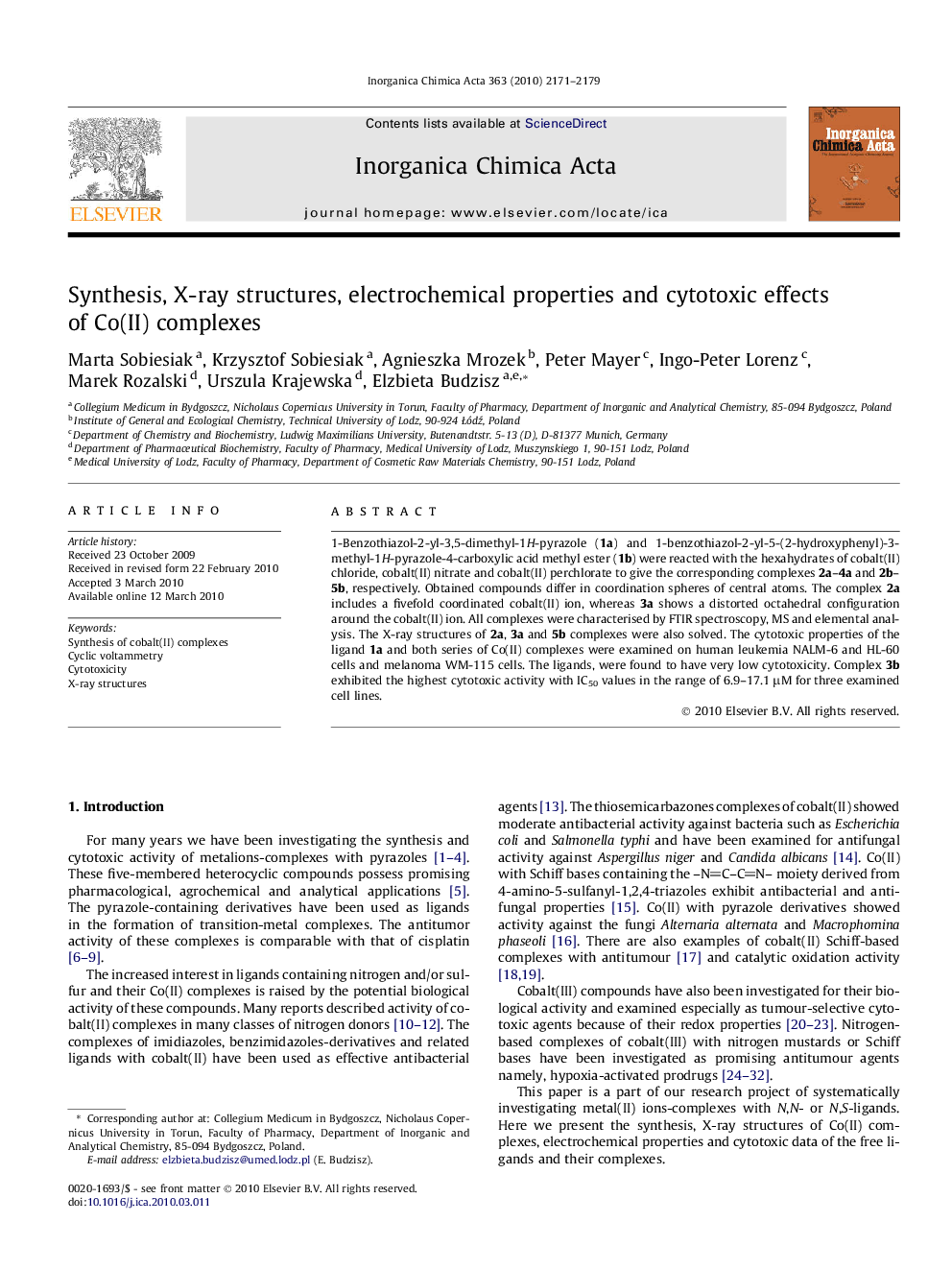| Article ID | Journal | Published Year | Pages | File Type |
|---|---|---|---|---|
| 1312567 | Inorganica Chimica Acta | 2010 | 9 Pages |
1-Benzothiazol-2-yl-3,5-dimethyl-1H-pyrazole (1a) and 1-benzothiazol-2-yl-5-(2-hydroxyphenyl)-3-methyl-1H-pyrazole-4-carboxylic acid methyl ester (1b) were reacted with the hexahydrates of cobalt(II) chloride, cobalt(II) nitrate and cobalt(II) perchlorate to give the corresponding complexes 2a–4a and 2b–5b, respectively. Obtained compounds differ in coordination spheres of central atoms. The complex 2a includes a fivefold coordinated cobalt(II) ion, whereas 3a shows a distorted octahedral configuration around the cobalt(II) ion. All complexes were characterised by FTIR spectroscopy, MS and elemental analysis. The X-ray structures of 2a, 3a and 5b complexes were also solved. The cytotoxic properties of the ligand 1a and both series of Co(II) complexes were examined on human leukemia NALM-6 and HL-60 cells and melanoma WM-115 cells. The ligands, were found to have very low cytotoxicity. Complex 3b exhibited the highest cytotoxic activity with IC50 values in the range of 6.9–17.1 μM for three examined cell lines.
Graphical abstractHere we presented the synthesis and cytotoxic effect of Co(II) complexes. All compounds were fully characterised. X-ray structures of three complexes were solved. The cytotoxic properties of the complexes were examined on human leukemia NALM-6 and HL-60 cells and melanoma WM-115 cells.Figure optionsDownload full-size imageDownload as PowerPoint slide
